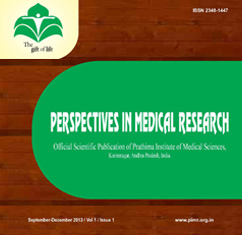Idiopathic Plastic Bronchitis in a Post-Liver Transplant Adult: A Case Report
Abstract
Background: Plastic Bronchitis (PB) is a rare condition involving bronchial cast formation, typically seen in children but occasionally reported in adults with diverse etiologies. Case Details: We present a unique case of idiopathic PB in a 67-year-old male, 10 years post-liver transplant, on long term immunosuppression with Sirolimus. Diagnostic workup ruled out known causes, and symptoms resolved with steroids, suggesting a potential link to transplantation or immunosuppression. Conclusion: This case highlights a novel etiology for PB in adults.
Keywords
Adult Plastic Bronchitis, Idiopathic Plastic Bronchitis, Plastic Bronchitis
INTRODUCTION
Plastic bronchitis (PB) is a rare pulmonary condition characterized by the presence of casts in the trachea or bronchial tree. Patients presenting with PB may show signs of productive cough, dyspnoea, fever or pleuritic chest pain. 1 Due to rarity of the disorder the true prevalence of PB is unknown. Though more prevalent overall in children, from idiopathic cases to abnormal lymphatic circulation, wide variety of aetiologies of PB were reported in adults as well.
CASE PRESENTATION
A 67-year-old male with a known history of hypertension and type 2 diabetes mellitus presented with complaints of recurrent hemoptysis and expectoration of whitish, rubbery bronchial casts (Figure 1) over the past six months. He had undergone orthotopic liver transplantation ten years earlier for acute liver failure attributed to Ayurvedic medication use for vitiligo and had been on sirolimus therapy since the procedure. There was no history of recurrent infections, cardiac disease, or occupational exposure to respiratory irritants.


Imaging and Laboratory Investigations: High-resolution CT of the chest demonstrated bilateral diffuse ground-glass opacities, with a soft tissue opacity noted in the right lower lobe bronchus suggestive of a possible cast (Figure 2). CT pulmonary angiography excluded vascular malformations. A complete autoimmune profile including ANA, rheumatoid factor, and anti-neutrophil cytoplasmic antibodies (c-ANCA, p-ANCA) was negative. Peripheral eosinophilia was noted; however, parasitic and viral etiologies were excluded based on serological and stool analyses.
Bronchoscopy and Further Evaluation: Flexible bronchoscopy revealed no endobronchial lesions or active bleeding. Bronchoalveolar lavage was negative for infectious organisms, malignant cells, and hemosiderin-laden macrophages. No evidence of a Dieulafoy lesion was found. Given the chronicity and expectoration of rubbery casts, a provisional diagnosis of PB was considered.
To assess for potential lymphatic abnormalities, MR lymphangiography was performed, which demonstrated no evidence of thoracic duct leak, stenosis, or duplication.
Management and Outcome: The patient was initiated on oral corticosteroids (prednisolone 1 mg/kg), resulting in the resolution of hemoptysis and cast expectoration. He was advised close follow-up, and no recurrence was noted over the next two months.
DISCUSSION
PB in adults rarely presents as a complication of thoracic surgeries. One case report of PB following CABG possibly due to acute inflammatory response was reported. 2 Another case of PB was reported following lung transplantation. 3 Abnormal lymphatic flow because of anatomic variations such as duplication of Thoracic duct, 4 thoracic duct stenosis 5 etc. may explain the appearance of PB in some adults. Cast formation can present as a result of infections like Viral 6 , AIDS and Kaposi’s sarcoma 7 etc. PB in adults may have miscellaneous causes including environmental exposures as seen in Silicosis 8 , Drug reactions 9 and genetic predispositions. In this case all such possibilities have been ruled out suggesting a possible Idiopathic PB. However, it is interesting to see if Organ transplantation and immunosuppressive treatment can lead to PB.
CONCLUSION
Despite being a rare condition to develop in Adults Plastic Bronchitis can present due to various aetiologies particularly in immunocompromised hosts who have undergone Organ transplantation. In all such Idiopathic PB cases thorough evaluation needs to be done to identify the probable aetiological factor.
Disclosure
Funding: None
Conflict of Interest: None Declared
Author Contribution: All the authors involved in study have contributed equally at all stages of work
Acknowledgements: I would like to express my appreciation to all those who have supported and contributed to the completion of this project


